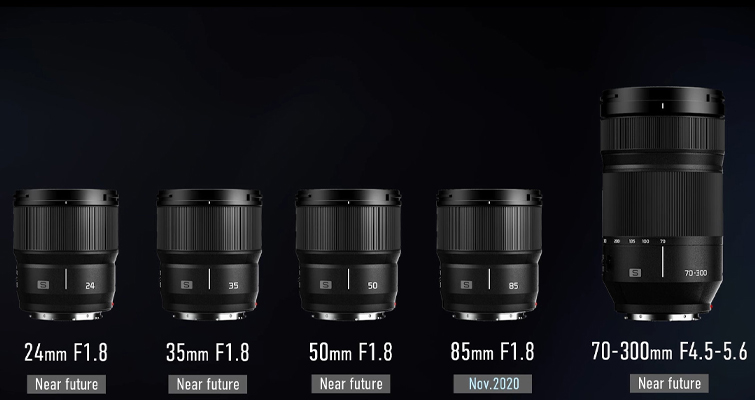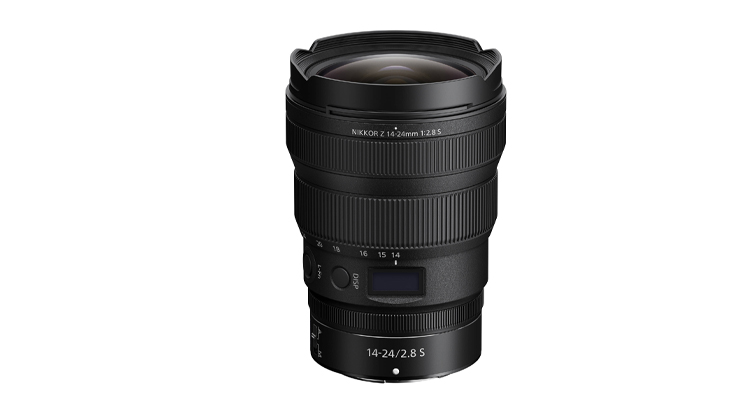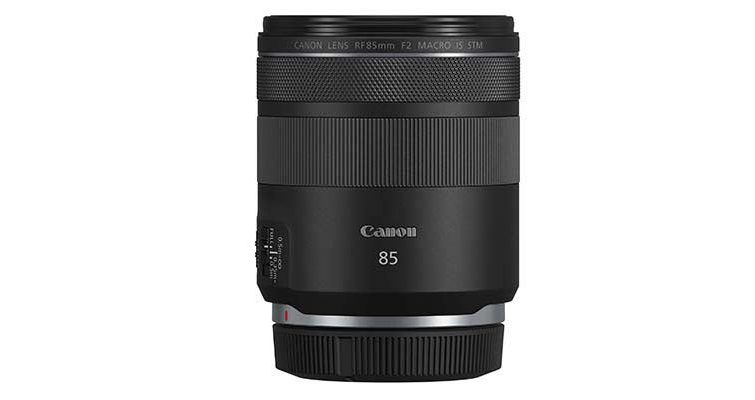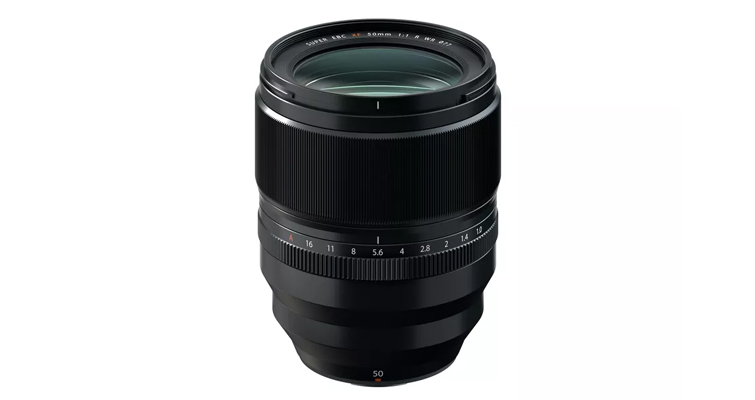
The Best New Lens Mount Announcements of 2020
With the introduction of the RF mount, the L mount, and the Z mount, the world of lenses recently took a reset at available models. Let’s look at the exciting additions of 2020.
Just a few years ago, shopping for a new lens was like trying to find a movie to watch in an endless sea of Netflix recommendations. Whether upgrading or just looking to try out a new focal length, there were so many on the market; it could easily create a paradox of choice for new beginners.
However, from 2018 onward, leading camera manufacturers introduced us to three new lens mounts engineered to take advantage of the mirrorless format. With that, we saw a hard reset of the lens market, and, for the first time, you could count the amount of first-party lens available for a new mount on just one hand.
Slowly but surely, we’ve seen the market for the new mounts populate. When the new mounts were introduced, we typically saw either professionally priced lenses or the occasional budget-friendly lens. Running into 2020, we’ve finally started to see intermediately priced lenses. Let’s look at some of the exciting lenses that are set to release in the coming months.
Panasonic Lumix S 85mm f/1.8 – Late 2020

While I’ve listed the 85mm in the sub-heading because it’s a lens released this year, it should be noted that various F/1.8 lenses were also announced along with the 85mm, but we should see those released at a later date.
In 2018, Panasonic, along with Sigma and Leica, formed the L-mount alliance. And after that, every full-frame camera from Lumix and Sigma has housed the Lecia mount (as we have seen the Sigma FP do).
Between both Lumix and Sigma, there is a wide variety of lenses available for the S line of Lumix cameras; The S1, S1H, S1R, and S5. However, when you remove Sigma from that line-up, the number of lenses available drops quite significantly.
Available are:
- 24-70mm f/2.8 – $2197
- 16-35mm f/4 – $1497
- 24-105mm f/4 – $1297
- 70-200mm f/2.8 $2597
- 70-200mm f/4 – $1697
- 50mm f/1.4 – $2297
- 20-60mm f/3.5-5.6 – $597
Outside of the somewhat expensive entry-level 20-60mm zoom, it’s either top-tier lenses, or you would need to buy the third party with Sigma if on a budget.
However, this year Panasonic has announced several f/1.8 primes covering the missing gap for affordable but quality primes. I wouldn’t expect that affordability to drop under $500, but I think it would be a safe bet to guess that these lenses will land between the $600-$1000 margin, which correlates to Nikon’s Z- mount f/1.8 line-up.
Providing there are no delays, the 85mm should be released in November. And moving forward, we will see f/1.8 L mount versions of 24mm, 35mm, 50mm (and a 70-300mm f/4.5-5.6 was also announced). As you can see from the promotional material, all lenses are of the same height and width, and while that may make for awkward lens retrieval from your camera bag, I think I like that approach.
Quick specs of the 85mm f/1.8: Currently not released.
Nikkor Z 14-24mm f/2.8 S – Late 2020 – $2396

We’ve yet to see an extreme wide-angle zoom introduced into the lens market for the new mounts. Perhaps we could count the Sigma 14-24mm as they have an L-mount version of that lens, but it was also produced for the Sony E mount and Nikon F mount, so we’re going to waiver that addition.
However, just a few weeks back, Nikon announced Nikon Z 14-24mm f/2.8 s. With Nikon Z-24-70mm f/2.8 and the Nikon Z 70-200mm f/2.8 out in the wild, the 14-24mm also completes Nikon’s f/2.8 holy trinity, and with that extra 2mm on the wide-angle zoom over the 15/16-35mm, it makes it one of the longest focal ranges available across the new set of mounts.
I think it would be fair to say we don’t typically associate Nikon with video, even though their cameras can be 4k video. But perhaps with more quality lenses like the 14-24mm f/2.8, we may see more creators adopt the brand.
Aside from the Z 50mm f/1.2 S which was also announced along with the 14-24mm, there haven’t been any more formal announcements for the new Z line, but Nikon Rumors suggest the following lenses are set to be announced shortly.
- NIKKOR Z 28mm Prime Lens
- NIKKOR Z 40mm Prime Lens
- NIKKOR Z 50mm f/1.2 S Lens
- NIKKOR Z 50mm Macro Lens
- NIKKOR Z 105mm Micro S Prime Lens
- NIKKOR Z 24-105mm S Zoom Lens
- NIKKOR Z 100-400mm S Zoom Lens
- NIKKOR Z 200-600mm Zoom Lens
- NIKKOR Z DX 18-140mm Zoom Lens
Quick specs of the 14-24mm f/2.8s
- Type: Nikon Z mount
- Focal length: 14–24 mm
- Maximum aperture: f/2.8
- Minimum aperture: f/22
- Lens construction: 16 elements in 11 groups (including 4 ED elements, 3 aspherical elements, elements with Nano Crystal and ARNEO coats, and a fluorine-coated front lens element)
- The angle of view FX-format: 114° to 84°, DX-format: 90° to 61°
- Focal length scale: Graduated in millimeters (14, 15, 16, 18, 20, 24)
- Focusing system: Internal focusing system
- Autofocus: Yes
- Focusing: Auto, Manual
Canon RF 85mm F/2 Macro – Late 2020 – $599

Right from the start of the RF introduction, Canon was quick to implement several lenses into the line-up. From the holy trinity to the primes, Canon wanted to make sure the world was ready to adopt the RF mount.
In 2020, the announcements and releases have been somewhat more niche-targeted. This year Canon announced the following with 2020/2021 releases.
- 85mm F2 MACRO IS STM
- Canon RF 600mm F11 IS STM.
- Canon RF 800mm F11 IS STM.
- Canon RF 100-500mm F4.5-7.1 L IS USM
- Canon RF 24-105mm F4-7.1 IS STM
- Extender RF 1.4x
- Extender RF 2x
Nothing immediately caught my eye from this list for videographers. Still, on a second look, the 85mm f/2 Macro is a welcome addition to the line-up as the longer focal length allows for a more nurtured macro experience. However, it should be noted that the macro magnification on the lens isn’t ideal as it sits at 0.5x.
What does this mean? Well, ideally, you would want a magnification ratio of 1x for true macro photography. However, in the video case, a lens like this presents itself well for close-ups of objects like wedding rings.
Quick specs of the 85mm F/2 Macro:
- Type: Саnоn: RF
- Аnglе оf vіеw (dеgrееѕ) 24º, 16º, 28º 30
- Ареrturе blаdеѕ 9
- Fосаl lеngth (tеlе) 85
- Lеnѕ еlеmеntѕ 12
- Lеnѕ grоuрѕ 11
- Мах ареrturе – tеlе f/2
- Міnіmum ареrturе f/29
- Міnіmum Fосuѕ Dіѕtаnсе (m) 0.35
Canon RF 70-200mm f/4L IS USM – Rumor.
Ok, so this is technically a rumor more so than a formal announcement, but I wouldn’t be surprised if we hear about this lens toward the end of the year.
The Canon RF 70-200mm F/2.8 was released toward the end of 2019, completing the F/2.8 trifactor and the 15-35mm and the 24-70mm F/2.8. While these lenses boast the top-tier quality expected from the F/2.8 series, they weren’t cheap. The full set would cost you up to $7,227. While a budget telephoto zoom was available in the form of the 24-240mm f/4-6.3 at $699 or the 24-105mm f/4-7.1 at $399, there was no bridge between entry-level and professional typically found in the F/4 models of the holy trinity, colloquially named the unholy trinity.
However, keeper-of-rumors Nokishita has reported that Canon has filed for a patent for the RF version of the 70-200mm f/4 in Russia. With that, we could likely see the unholy trinity make its way onto the camera market, allowing video creators and photographers to obtain the fan-favorite zoom line without the f/2.8 price tag.
Quick specs of the 70-200mm f/4: Currently not released.
Fuji 50mm F1.0 – Late 2020 – $1499

Yes, this is not a lens for one of the new mounts introduced over the last two years. While the X mount has been alive and well since 2012, the arrival of the F/1.0 was an unprecedented announcement from Fuji, as it marks the arrival of the fastest autofocus lens for mirrorless cameras.
At 50mm, it wields an equivalent field of view of around 75mm (as Fuji uses APS-C sensors). As an owner of the Fuji 16-55mm 2.8 Red Label lens, it’s likely this lens will be just as chunky and heavy as the zoom.
Many commentators across photography and film blogs were unsure about who or what this lens is upon release. But The Verge sums the notion pretty well.
Long in development, this is very much a statement lens for Fujifilm rather than something that’ll be a practical tool for most photographers.
Either way, as a Fuji user, I’ll be adding this to the wish list.
Quick specs of the 50mm f/1.0
- Type: Fuјі Х
- Саmеrа Lеnѕ Туре Ѕhоrt Теlерhоtо Рrіmе
- Fіltеr thrеаd (mm) 77
- Fосаl lеngth (tеlе) 50
- Fосаl lеngth (wіdе) 50
- Lеnѕ еlеmеntѕ 12
- Lеnѕ grоuрѕ 9
- Мах ареrturе – tеlе 1
- Мах ареrturе – wіdе 1
- Міnіmum ареrturе 16
- Міnіmum Fосuѕ Dіѕtаnсе (m) 0.7
- Аnglе оf vіеw (dеgrееѕ) 31.7
- Ареrturе blаdеѕ 9
What’s Next?
We’re still very much in the birthing stage of the new lenses available for the new series of mounts from Canon, Nikon, and the L-mount alliance. Outside of Sigma’s somewhat affordable additions, there aren’t many entry-level and inexpensive lenses available to purchase. But at the same time, there isn’t exactly an entry-level Lumix S line or EOS R camera available. However, I can assume that we’ll continue to see more inexpensive lenses added to the lines over the next year, along with niche lenses that are currently unavailable.
Looking for more lens rundowns and roundups? Here you go:
Are Angenieux EZ Zoom Lenses a Documentary Filmmaker’s Dream?
Real Cinema Lenses You Can Afford
2020’s Best Prime Lenses Under $1,000
The Best Inexpensive Lenses for the Blackmagic Pocket 6K
Full-Frame Zoom Lenses for Full-Frame Cameras





